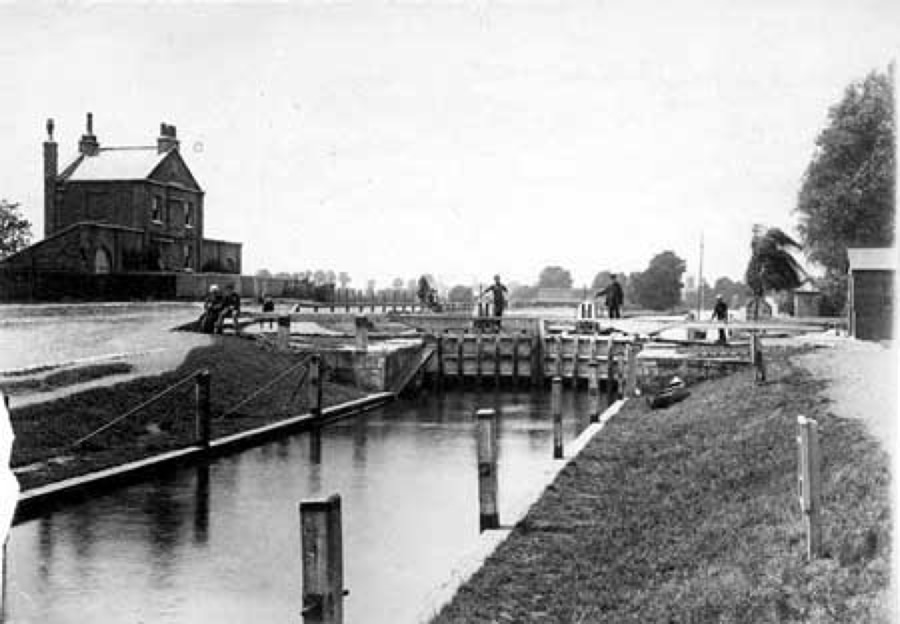Our lock was first proposed in 1802 because of the shallows upstream but nothing came of the suggestion. During droughts, the Thames was liable to become too shallow for river craft to pass through. The heavily laden barges were held up, sometimes for weeks at a time while the bargemen waited for the weather to turn. When it did, the higher water levels allowed the barges to float through. In 1809 the proposal was resubmitted and the Act for the construction of Molesey Lock was passed by Parliament in 1812. Building began in 1814 and it opened in 1815 with an Italianate lockhouse.
The first lock keeper was killed in a horse race at Moulsey Hurst and his successor discharged after incidents of pilfering from barges. In 1853 some changes were made to the lock in anticipation of lower water levels caused by the extraction of water upstream. Fish ladders were added to the weir in 1864 and the boat slide built in 1871. Such was the popularity of boating in these days that in 1877 a boat and crew were stationed above the weir in case of accidents. The lock was rebuilt in 1906.
The lock’s 1906 rebuild was carried out to accommodate the long 200ft naval craft built at Platt’s Eyot, just upstream of the lock. Between the 1800s and early 1900s, Molesey was probably the most popular lock on the Thames – on summer Sundays.

